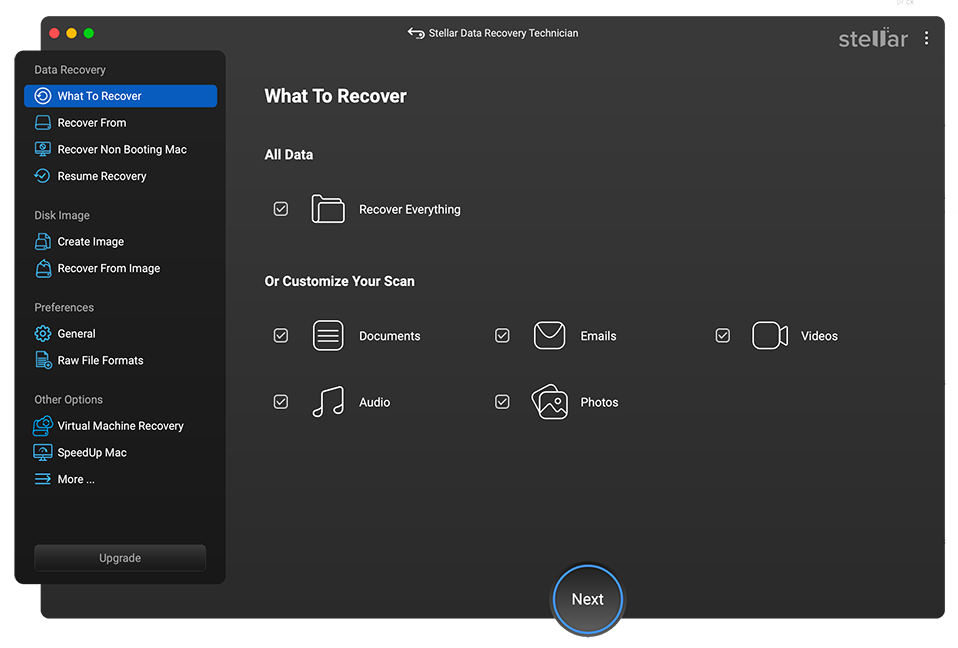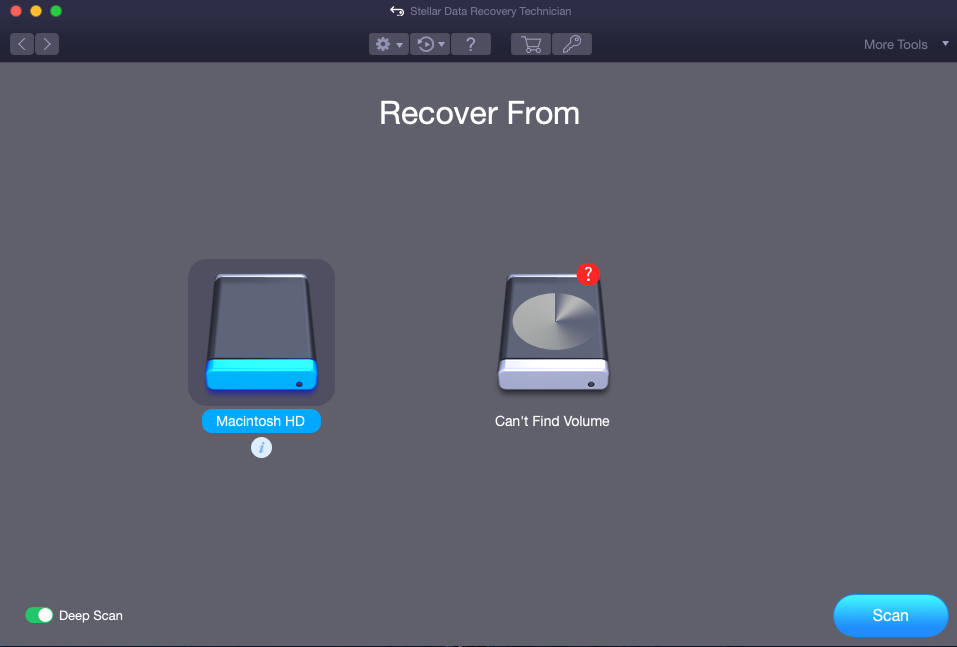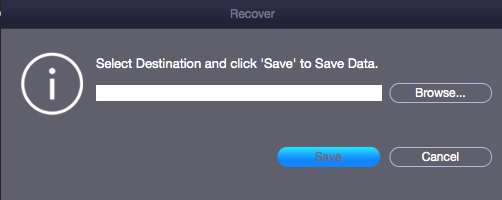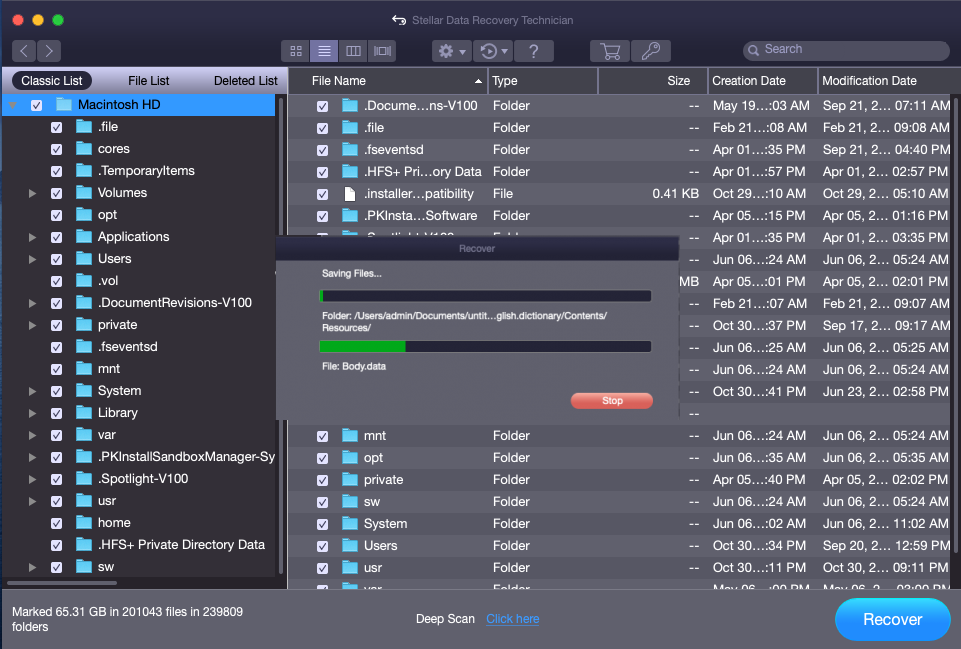Stellar Data Recovery Technician is loaded with multiple features and is a complete package for all your data recovery needs. Using the Stellar Data Recovery Technician, you can easily recover almost all types of data from your Mac hard drive or external storage media. The software supports APFS, HFS, HFS+, NTFS, FAT, FAT16, FAT32, and exFAT file systems. The software is capable to:
- Recover documents, emails, images, videos, audio files, and much more.
- Repair corrupt photos and videos, and restore them to their original quality.
- Recover data from a crashed Mac via bootable USB drive.
- Recover data from APFS File Vault Encrypted Drives and Fusion Drives.
To recover data from your Mac using Stellar Data Recovery Technician, follow the steps below:
Step 1: Run Stellar Data Recovery Technician for Mac.
Step 2: From the Select What to Recover screen, you can choose to Recover Everything or select specific file type from the Documents, Emails, Videos, Audio, or Photos files.

Step 3: Click Next and from the Recover From screen, choose the volume from which you want to recover data.

Step 4: To conduct a comprehensive scan of your volume, you can click on the toggle button of Deep Scan at the bottom left corner and then click the Scan button. The scan process will start.
| Note: If you are scanning your Mac with macOS Monterey, Big Sur, Catalina, Mojave or High Sierra for the first time using Stellar Data Recovery, you need to allow your macOS to load an extension signed by Stellar Data Recovery. Click here to learn more. |
Step 5: If you wish to abort the scanning before it completes, click the Stop button at the bottom right.

Step 6: On completion of the scanning process, the Scanning Completed Successfully dialog box appears. Click OK.

| Note: To save the scanned information and resume the process at a later time, read Save and Load Scan Information. |
Step 7: Once the scanning process is complete, the scanned data is listed in a tree view structure as shown below.

| Note: You can choose to view your data in Classic List, File List, or Deleted List from the sidebar on left. |

Step 8: To preview a specific file, click the tree structure and select the desired folder to view the file inside it. Now, double click the file to see its preview in a new window.

Step 9: Once you are satisfied with the preview, select the Files and Folders you want to recover and click the Recover button at the bottom right corner.
| Note: To know more about the recovery options click here. |
Step 10: A new dialog box titled Recover will open. Click the Browse tab to select the destination to save the recovered file/folder and then click Save.

Step 11: If the destination has files with same name, you can choose to overwrite, rename, or skip as per your convenience. The saving process will initiate.

The files or folders you have selected will be recovered and saved at the designated location.








